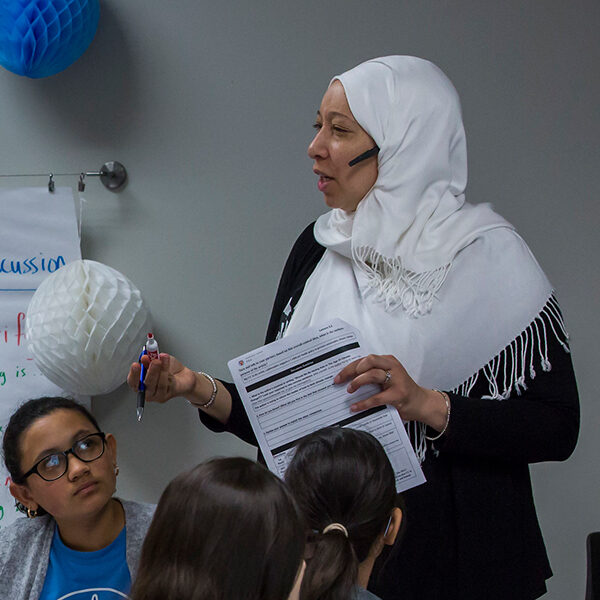
Over the past year, I’ve written about how educators, researchers, ed tech developers, and funders are all important to enacting TLA’s Measurement Agenda for Blended Learning to connect the research and implementation cycles and help us all understand how to best support all students in reaching their full potential. This post, the last of the series, focuses on the keystone stakeholder group: the administrators and policy makers tasked with making decisions about the systems, models, and policies that serve as guardrails for our students’ learning experiences. I refer to this stakeholder group as the keystone because in many ways they are the critical connecting group between those who traditionally work in the research cycle and those who work in the implementation cycle. Decision-makers often hold the keys to truly unifying the research and implementation cycles by bridging the language, resource, communication, and capacity gaps between these cycles.
So what can decision-makers do to help bridge research and practice? The key is moving towards an evidence-based approach to decision- and policy-making; as well as continuously reflecting on the successes and failures of past decisions by using and sharing data and evidence about specific outcomes to understand areas of success and those for improvement. Decision-makers should also look to evidence when making decisions about scaling, sustaining or adjusting current implementation.
One Foot in the Research Cycle
There are many factors that influence the decisions that administrators and policy makers are routinely asked to make. Unfortunately, in many cases, evidence or a deep understanding of what works, how, and for whom is not one of these factors. This is not the fault of the decision-makers. Many times there simply isn’t the evidence available to help them make decisions. I’d like to see an increase in the availability of this evidence and this is why I’m calling on them to shift to an evidence-based decision-making paradigm. While this may seem premature or backwards, it is exactly this type of systems change that the Measurement Agenda for Blended Learning seeks. The assumption being made here is that increasing the demand for relevant, practice-oriented research (and the implications and recommendations arising from that research) will create a new “currency” for researchers and a market for such research, and eventually the supply of research will grow to meet that demand.
More immediately — and more directly in the interest of the decision-makers themselves — this shift will also reduce the amount of inherent risk in the decisions they are making, and also will help to level expectations on the parts of all stakeholders in the implementation cycle.
One Foot in the Implementation Cycle
This shift towards evidence-based decision-making also creates positive change in the implementation cycle itself. Using an evidence-based decision-making perspective helps shift implementation into more of a continuous improvement cycle and helps stakeholders increasingly adopt a growth mindset when implementing. When stakeholders see that outcomes appropriately influence relevant decisions, the goal will always be to do better — rather than to meet seemingly arbitrary benchmarks or make a “pass/fail” determination quickly in order to move on to the next thing. Educators especially will understand the room they have for innovation and the tolerance in the system for what might be characterized under the current system as “failure” — so they will be more tolerant of trying new things, more invested in changing things that aren’t working in order to find the things that work. In other words, the supply of research is also increased as this mindset shift occurs.
This mindset shift towards evidence-based decision-making becomes self-fulfilling as well. Since a desire for more evidence also facilitates an openness towards research and measurement being conducted in more classrooms, with less fear of uncovering or documenting failures, there is more genuine interest in knowing more in order to do better. Increased desire for and openness to more classroom research, in turn, adds to our collective understanding of what is and isn’t working — the ultimate goal in a sector where change happens quickly and frequently.
The Charge
Decision-makers are uniquely positioned to both pull and push on the market for evidence that answers current, pressing problems of practice in implementing blended learning, and understanding if, when, and how it is successfully implemented. They also stand to gain significantly from the generation and curation of this evidence, and their influence on students’ learning experiences through the decisions they routinely make is exponential. As the lynchpin stakeholder group that spans both the research and the implementation cycles, take a look at our Measurement Agenda for Blended Learning and see how unifying these two cycles can not only provide critical information to help you make better decisions, but also enable you to know what decisions will best support your students in experiencing their optimal learning experience.

